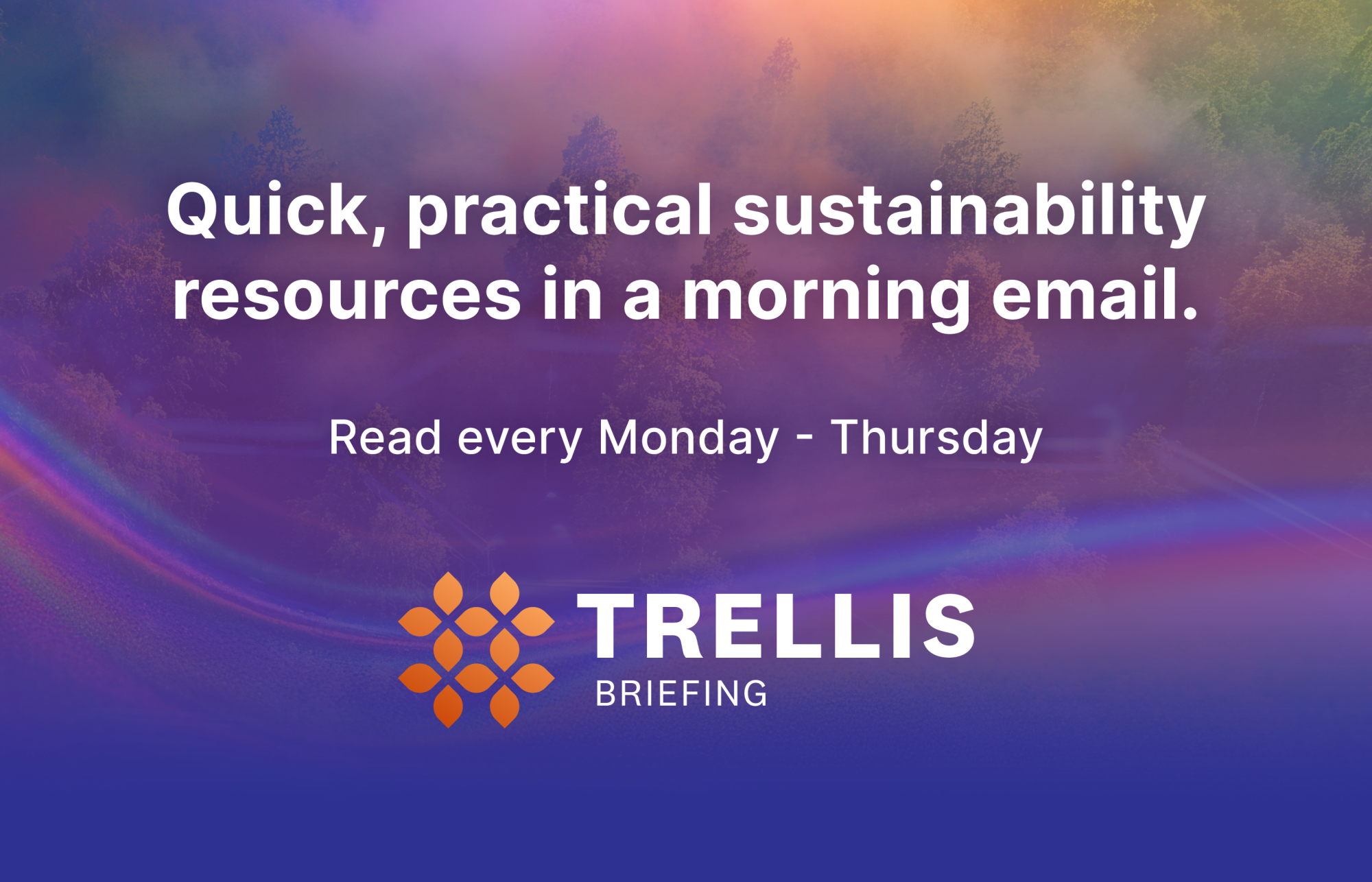How to set financial goals for a resale program
Creating a P&L that accounts for the blurred lines in resale can help companies set goals and timelines. Read More

- Many resale programs stagnate because leaders don’t allocate resources and support to financially scale programs.
- It’s difficult to set resale targets because companies don’t have a grasp on what’s reasonable or competitive.
- By using product and category track records, industry benchmarks and impact forecasting — along with a unique P&L — resale programs can measure the value of the program.
The opinions expressed here by Trellis expert contributors are their own, not those of Trellis.
Despite their talent, a brand wouldn’t charge a sustainability team with launching a new business or product line — so why would it charge a team with implementing a resale program?
Unfortunately, there’s a common misperception that sustainability teams should lead resale programs because it’s a sustainability initiative, and that the existence of a resale program makes the brand more sustainable, so additional resourcing is not required.
This results in many resale programs stagnating after launch. Instead, leaders need to allocate resources and support to financially scale successful resale programs to achieve sustainability benefits and align the program’s trajectory with being a driver of new business, customer loyalty, customer acquisition and supply chain resilience. This requires the skills and expertise of teams who are accountable for brand growth and profitability. These teams need to work in conjunction with sustainability teams who can help develop the program guardrails to avoid problematic greenwashing.
Integrating resale into business and innovation
Integrating resale into a brand’s core business and brand is paramount to accelerating program growth. Executive approval to enlist a cross-functional team usually is the start, and given competition for increasingly limited resources, it’s critical that brand leadership understands the potential opportunities and value resale can provide:
- Supply chain resilience: Create an alternative revenue stream that is less impacted by natural disasters and tariffs.
- Market share: Compete for more price-sensitive customers without sacrificing quality, by simply selling the same items again at a lower price.
- Consumer engagement: Interact with existing customers and attract new customers to a brand.
- Merchandising: Create the ultimate sale with great prices and exciting treasure-hunting opportunities.
Additionally, the role of resale as an innovation driver is often overlooked. Jen Yue, SVP of Tapestry & Coach Strategy, illustrates this with Coach’s experience with its circularity programming. “Coach (Re)Loved was the spark that ignited Coachtopia,” a distinct sub-brand designed to operate independently from Coach to “rapidly prototype new products, processes and ideas.” Launched in 2023, Coachtopia doubled its business and reached profitability within a year, ranking as the sixth most-innovative apparel company by Fast Company this year.
Ready, set, go … where?
Once a cross-functional team has been established to lead resale, specific targets, especially revenue and sales, are needed to hold teams accountable. These metrics are nearly impossible to benchmark across peer and competitor resale programs because brands don’t disclose this information.
This results in most brands hesitating to set financial goals for resale programs because they have no idea what a competitive or reasonable goal would be. H&M recently set a precedent by announcing in its 2024 sustainability report, that sales of secondhand goods had doubled in 2024 to 0.6 percent of total sales, from 0.3 percent in 2022. H&M should be applauded for this transparency. More disclosure of resale revenue goals and progress would help brands gauge their own progress and ideally spark beneficial competition.
But without comparable benchmarks to draw from, brands can use the following approaches to developing resale revenue goals:
- Product and category track records: By evaluating the path to profitability of new product and category launches, brands can set realistic financial growth goals and timelines for resale programs.
- Industry benchmarks: Use industry-specific reports such as ThredUp’s annual report for secondhand apparel to understand growth rates over time to build a program forecast.
- Impact forecasting: Use secondhand product footprints and the resale program’s displacement rate to forecast the environmental savings of a resale program under different growth scenarios, helping to inform program financial goals.
Building a P&L that generates insights
Although a profit-and-loss statement is the most direct way to track the progress of a resale program, there can be unforeseen challenges. In the early years, the lines are often blurry about what should be considered a true cost of the program and it can be unclear and difficult to assign operating costs and expenses. For example, the resale program may not yet have a dedicated team, and instead many people are contributing a portion of their time to getting the program off the ground; or it might use existing systems and warehouse space in a piggy-back approach.
In general, at the beginning of a resale program, take a simple “apples to apples” accounting approach with clear-cut expenses and sales attributed to it — keeping in mind that the value of the P&L is that it generates insights and learnings about where a program is failing and succeeding so that teams can iterate and adjust.
A challenge specific to resale P&Ls is how to account for the incremental spend of gift cards issued to sellers in the trade-in/buy-back process. The value issued on the gift card is the cost of product acquisition and will be accounted for in the cost of goods sold. When a seller uses the gift card, they may spend beyond the value of the card.
Adding this revenue to the resale P&L will definitely make the program look financially stronger and more attractive; however, this can be greenwashing the P&L. This is because these gift cards usually can only be used to purchase new items, which perpetuates the linear business model because revenue is being derived from the sale of new items, despite the gift card originating in a circular business model. If the gift card can be used to buy secondhand items, then those transactions can be captured in the resale program sales.
Expanding the understanding resale value
Along with traditional accounting tools, teams can set up KPIs that measure the additional business values of the program. For example, brands that measure the percentage of resale transactions coming from new customers report this number in the range of 10 to 25 percent. With this data, a business team can compare the cost of acquiring customers through its resale program versus other approaches to customer acquisition. Gaining these insights help build a holistic understanding of the challenges and opportunities of a resale program.
With a robust understanding of the benefits and challenges of a retailer’s resale program, a committed cross-functional team and a north star to point to, brands are well-equipped to develop successful programs — and expand beyond resale with other circular business models that help build a more responsible business and a more sustainable, circular economy.

Subscribe to Trellis Briefing
Featured Reports

The Premier Event for Sustainable Business Leaders
















